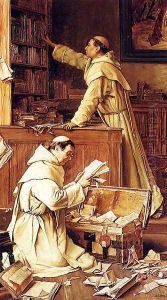Jean Henri Coene Paintings
Jean Henri Coene was a Belgian painter and lithographer born in 1822. His contributions to art are primarily noted in the realms of genre painting, portraiture, and lithography. Coene's work reflects the broader European artistic movements of the 19th century, particularly those that emphasized detailed realism and emotional depth. Despite the lack of extensive documentation on his life, his surviving works offer insight into his skills and the thematic interests that drove his artistic endeavors.
Coene's career unfolded during a period of significant change in Europe, where the revolutions of 1848 and the subsequent political upheavals influenced many artists of his time. These events, however, seem to have had a limited impact on Coene's thematic choices, as he predominantly focused on timeless subjects such as human figures, everyday life scenes, and portraits rather than overtly political themes. This focus allowed him to explore the human condition and the subtleties of social interaction through his art.
He exhibited a keen interest in the technical aspects of painting and lithography, experimenting with light, shadow, and composition to enhance the narrative quality of his works. Coene's ability to capture the essence of his subjects with accuracy and sensitivity earned him recognition among his contemporaries. Despite this, his reputation has not endured as prominently as some of his peers, partly due to the overshadowing presence of other, more famous 19th-century Belgian artists.
Jean Henri Coene's death in 1869 marked the end of a career that, while perhaps not as celebrated as some of his contemporaries, contributed significantly to the Belgian art scene of his time. Today, his works, though relatively rare, can be found in private collections and occasionally appear in exhibitions focusing on the period's art. They continue to be appreciated for their craftsmanship, attention to detail, and the glimpse they provide into the lives and sentiments of 19th-century Europeans.
